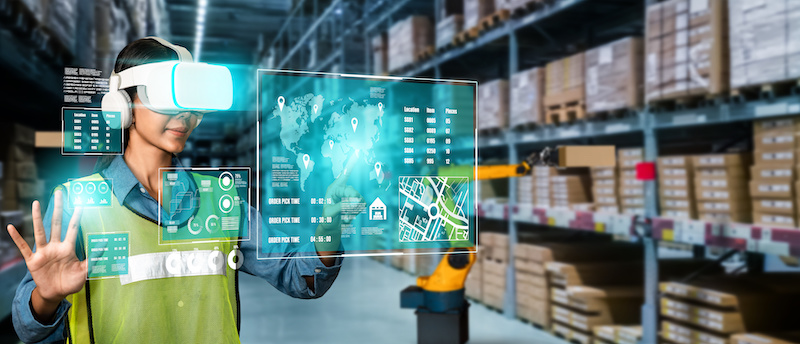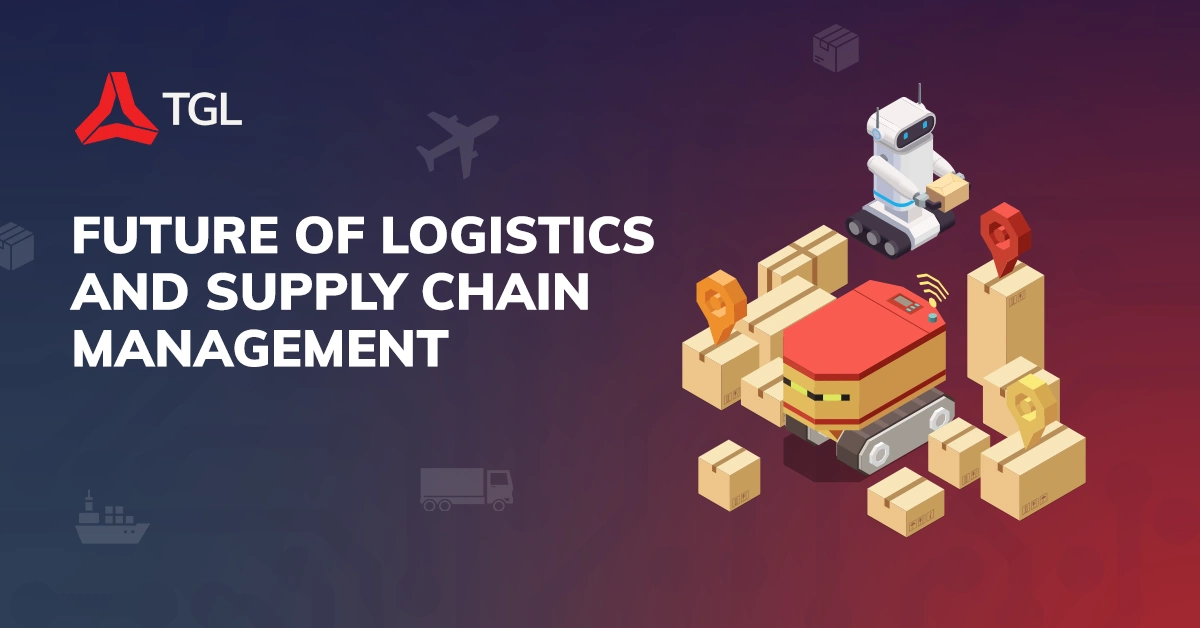Warehouse Automation

Warehouse automation has emerged as a cornerstone of current supply chain management, revolutionising the manner items are stored, picked, packed, and shipped. From robot structures and conveyor belts to self-sustaining motors and synthetic intelligence (AI), automation technology is reshaping warehouse operations, using efficiency, accuracy, and agility. Explores the evolution of warehouse automation, its key components, benefits, challenges, and destiny trends, highlighting its transformative effect on the logistics industry.
The Rise of Warehouse Automation
The want for warehouse automation arises from the developing complexity and needs of present-day supply chains, pushed with the aid of using elements along with e-trade growth, shorter shipping times, and growing client expectations. The evolution of warehouse automation may be traced returned to the creation of mechanised structures in the early twentieth century, observed with the aid of using the arrival of automatic technology in the latter 1/2 of of the century. Today, superior automation answers powered with the aid of robotics, AI, and IoT are redefining warehouse operations, permitting corporations to enhance productivity, accuracy, and scalability.
Key Components of Warehouse Automation
Automated Guided Vehicles (AGVs) and Autonomous Mobile Robots (AMRs): AGVs and AMRs are robot cars that navigate warehouse environments autonomously, transporting items among garage locations, choosing stations, and transport areas. These cellular robots enhance efficiency, lessen exertion costs, and decorate protection with the aid of using automated cloth to deal with tasks.
Automated Storage and Retrieval Systems (AS/RS): AS/RS structures use robot cranes, conveyors, and go-back-and-forth structures to shop and retrieve items from racks or cabinets automatically. By maximising vertical area and minimising human intervention, AS/RS structures optimise garage density, throughput, and stock accuracy in warehouses.
Pick-to-Light and Pick-to-Voice Systems: Pick-to-mild and pick-to-voice structures are order-selecting technologies that manually warehouse people to the area of objects with the use of visible or auditory cues. These structures enhance selection accuracy, speed, and performance via way of means of lowering mistakes and minimising journey time inside the warehouse.
Warehouse Management Systems (WMS): The WMS software program gives give-up-to-give-up visibility and manages warehouse operations, along with stock management, order processing, and hard work scheduling. Integrated with automation technology, WMS answers optimise workflows, allocate resources, and facilitate data-pushed decision-making in real time.
Benefits of Warehouse Automation
Increased Productivity and Efficiency: Automation technology streamlines warehouse processes, decreasing guide labour, minimising mistakes, and accelerating throughput rates. By automating repetitive tasks, organisations can enhance productivity, optimise useful resource utilisation, and meet developing calls without big increases in staffing.
Enhanced Accuracy and Inventory Control: Automation structures enhance stock accuracy via way of means of disposing of human mistakes and discrepancies in picking, packing, and stock management. Real-time monitoring and tracking competencies allow organisations to preserve surest stock levels, lessen stockouts, and enhance order success accuracy.
Scalability and Flexibility: Automated warehouse structures are inherently scalable and adaptable to converting enterprise desires and calls for fluctuations. Modular designs and bendy configurations permit organisations to extend capacity, reconfigure layouts, and introduce new automation technology as had to accommodate increase and operational changes.
Challenges and Considerations
Initial Investment Costs: The premature fees of imposing warehouse automation may be significant, consisting of prices associated with equipment, software, integration, and schooling. Businesses need to cautiously compare the go-back on investment (ROI) and long-term period blessings of automation answers to justify the preliminary investment.
Integration Complexity: Integrating automation technology with present warehouse infrastructure, structures, and workflows may be complicated and time-consuming. Compatibility issues, records migration demanding situations, and interoperability worries might also additionally get up at some stage in the implementation process, requiring cautious making plans and collaboration among stakeholders.
Workforce Adaptation and Training: The adoption of warehouse automation might also additionally require reskilling or upskilling the present warehouse team of workers to function and keep automatic structures effective. Businesses need to put money into schooling programs, alternate control initiatives, and staff improvement techniques to ensure a clean transition and maximise the blessings of automation.
Future Trends and Innovations
Robotics and AI Integration: Advances in robotics and AI technology are permitting greater intelligent, adaptable, and collaborative robots able to handle complicated responsibilities alongside human people in warehouse environments. Collaborative robots (cobots) and AI-powered structures decorate productivity, safety, and versatility in warehouse operations.
Predictive Analytics and Maintenance: Predictive analytics algorithms examine real-time statistics from sensors and automation structures to expect gadget failures, optimise upkeep schedules, and save you downtime. Proactive upkeep techniques lessen costs, increase gadget lifespan, and ensure uninterrupted operation of computerised warehouse structures.
Cloud-Based and Edge Computing: Cloud-primarily based totally and aspect computing technology permits real-time statistics processing, analysis, and decision-making at the brink of the network, in the direction of the supply of statistics generation. By leveraging cloud systems and aspect devices, corporations can obtain more scalability, agility, and connectivity in coping with and optimising warehouse operations.
Did you know TGL has its Own Warehouse in Sydney?
Based in Revesby, Sydney the TGL warehouse is close to Port Botany (Sydney Port) and close to our TGL HQ. We offer services in all areas of warehousing from e-commerce picking & packing, short-term or long-term storage contracts, inventory management and repacking. So whether you are a new e-commerce business or have just outgrown your space, allow us to manage your warehouse and distribution so you can focus on the most important element of your business - selling.
TGL
We specialise in offering business-to-business logistics services, including sea freight, air freight, domestic freight, warehousing, and customs clearance to all industries. We lead the industry in delivering exceptional services to our customers by focusing on our people and technology. Through our people-focused approach, we deliver a tailored experience to our clients by bringing a welcoming face into a faceless industry. Together with our staff, customers, and our partners, we aim to create a strong community we call Think Global Logistics.
What makes us different is providing our customers with a simplified service platform through fixed quoting and transparent pricing along with a single point of contact to guide you through the whole process, from start to finish. From knowing who to call for any needs to having a simple-to-understand cost structure, our customers are never in doubt and always in control.
TGL is and will continue to invest in developing its proprietary systems that will automate processes, reshape workflow, and collect data for smart, dynamic reporting. Our use of technology and automated systems delivers you a swift and simplified process and ensures a cohesive, transparent, and collaborative experience.
Whether your business requires the shipment of building materials, heavy machinery, food and beverage, fashion and clothing, technology devices, or many more. TGL has experience across all industries.
By following these guidelines and conducting thorough research, you can choose the right logistic company that will drive your business success. Remember, a reliable logistic partner can provide you with the necessary support to streamline your operations, reduce costs, and improve customer satisfaction. So take the first step today and start your journey towards finding the perfect logistic company for your business.
Conclusion
Warehouse automation is remodelling the logistics industry, using efficiency, accuracy, and agility in warehouse operations. By leveraging superior technology together with robotics, AI, and IoT, organisations can optimise processes, enhance productivity, and meet evolving client needs in today`s fast-paced, aggressive marketplace. While demanding situations together with preliminary funding costs, integration complexity, and a team of workers variation exist, the advantages of warehouse automation some distance outweigh the demanding situations, paving the manner for a greater efficient, resilient, and sustainable destiny in logistics and supply chain management. As generation keeps evolving, the opportunities for innovation and optimisation in warehouse automation are limitless, promising endured improvements and enhancements within the years to come.



